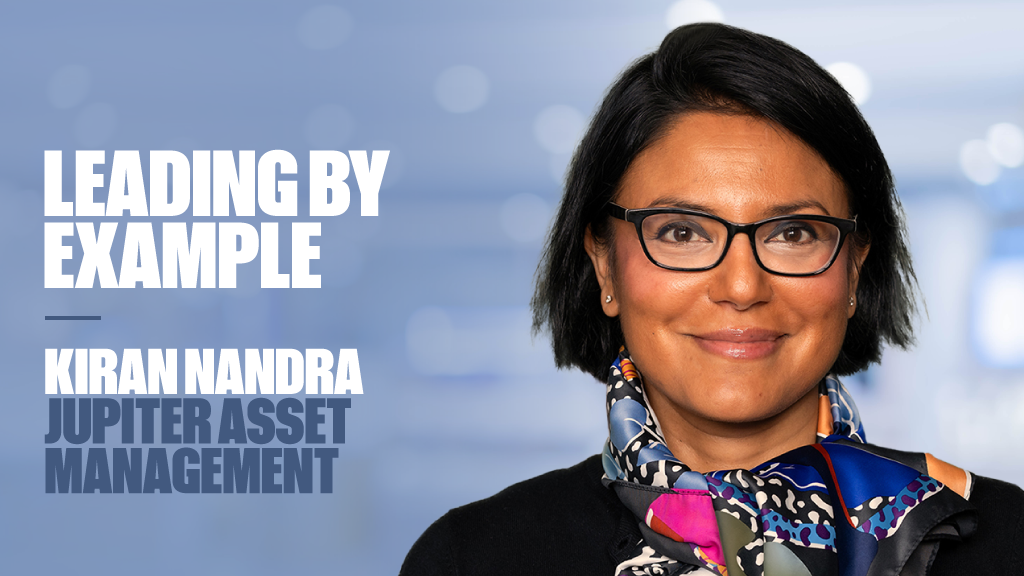Investment Association sectors are facing pressures from the rise of model portfolios and the increasing sophistication of outsourced investment solutions as a consultation on exchange-traded funds tries to keep the fund categories relevant to retail and intermediary investors.
The IA categorises 3,543 funds into 37 sectors in an effort to make the investment universe more navigable. In November, the industry body launched a consultation to open up the sectors to ETFs with initial plans to include an additional 200 or so products.
The sectors are catered to consumers and their advisers, but changes in the way intermediaries are managing client money means many advisers are using investment solutions that do not sit within a sector while the discretionary fund managers they outsource to are utilising more sophisticated methods for fund analysis.
Finding and assessing funds
Lyxor Asset Management head of ETF strategy Adam Laird, who also chairs the IA ETF committee, says the sectors are used in two ways: to find products and to assess performance.
“When it comes to finding products, the sectors are used quite often by fund platforms and by retail investors. They are a way of filtering down these universe of investments that are on offer. There are probably 5,000 plus investments openly available to investors in the UK and Europe.”
When it comes to performance, Laird says the use of average IA sector performance is widespread in the industry. “So, for example, fund managers comparing their performance to the sector average as well as to an index.”
Multi-asset solutions
Quilter Investors does not use the IA sectors for its fund research but is aware its products may be compared to their peers via the mixed asset sectors, says investment director Danny Knight.
“From our perspective, we are cognisant that advisers do like an individual comparator that they can compare fund behaviour to as a starting point. They’ll use that as an early measurement to start analysis. I would suggest it’s not the be all and end all.”
He points to the Mixed Asset 40-85% Shares as an example. “If you look at the returns of that over the last five years, best performing is 72%, worst performing is 9%. The converse, over five years, from a risk perspective is 9.5% vol compared to 4.7%. You can very clearly see looking at the return and the behaviour that you could be looking at things that are not directly comparable.”
Discus director for discretionary managing partnerships Gillian Hepburn points out the growth of model portfolios means many advisers are now using investment solutions that don’t even sit in the IA sectors. “Model portfolios are not a regulated product in the same sense that a fund so they wouldn’t appear within a sector.”
Instead advisers must use a tool like FE Transmission to draw performance comparisons between model portfolios, Hepburn says.
Knight added: “From a multi-asset perspective, the most important thing is that the client gets an outcome that they’re led to expect. If the client gets that, whether you’re first, second, third, fourth quartile, the client probably doesn’t care.”
A broad church
Gone are the days when managers outperformed their sector average, marketed themselves as first quartile and reaped fund inflows, says Knight. “If you go back to the 1990s or early 2000s there would be, that’s typically how the industry operated.” Instead, the rise of outsourced investment solutions means the industry is increasingly sophisticated in its approach to fund research and analysis.
Most intermediaries contacted by Portfolio Adviser regarding their usage of IA sectors described them as a broad base which they either used as a starting point for assessing the fund universe or disregarded completely.
Justine Fearns, research manager at Chase de Vere, said the financial advice firm uses sectors to segment funds for an initial performance assessment, which can lead to further quantitative or qualitative analysis. “But we do not necessarily rely on them completely for this purpose as the variation in individual fund objectives and mandates within each sector can be considerable and in most instances you are not comparing apples with apples.”
Chelsea Financial Services managing director Darius McDermott also describes the IA sectors as a good starting point. “But I don’t think today anybody with good process would be thinking ‘well that’s the number one fund I’ll just buy that’. Probably 20 to 30 years ago there would have been chunks of that type of behaviour.”
Even looking at top-performing funds over a longer period would throw up problems, McDermott says pointing to the top-quartile £5.3bn Jupiter European fund as an example. “We own it and it is a good fund. But we know that the sort of stock it invests in have been in favour in markets.”
Problematic IA sectors
The Sterling Strategic Bond sector is one that AJ Bell head of active portfolios Ryan Hughes reckons is too diverse for the purposes of fund analysis. “In that sector I know there some funds permanently tilted to high yield and some funds permanently tilted to gilts and there are some funds that are permanently strategic. If I look at the quartile rankings of that sector, I have to look at it with a pinch of salt.”
Targeted Absolute Return was another sector where comparison between constituents is not that meaningful, says Hughes.
Portfolio Adviser analysis of IA equity sectors shows mixed performance compared to benchmarks.
The UK All Companies sector, for example, outperformed the FTSE All Share in six of the last 10 years going back to 2008, with the largest differential between the two when the All Share delivered 11.19% in 2016 compared with 16.75% in the sector. In the UK Smaller Companies sector, differentials with the index reached even greater extremes averaging 31.29% in 2010 compared with 19.52% in the FTSE Small Caps sector.
In contrast, the Global Emerging Markets sector underperformed the MSCI Emerging Markets Index in every single calendar year between 2008 and 2017, but never by more than 1.67%.
Returns in IA equity sectors versus mainstream indices
| 2017 | 2016 | 2015 | 2014 | 2013 | 2012 | 2011 | 2010 | 2009 | 2008 | |
| IA North America | 10.11 | 31.67 | 4.68 | 17.81 | 30.82 | 7.31 | -1.84 | 17.74 | 19.24 | -18.61 |
| USA S&P 500 | 11.29 | 33.55 | 7.25 | 20.76 | 29.93 | 10.91 | 2.87 | 18.68 | 12.6 | -12.77 |
| USA DOW JONES IND AVG | 17.02 | 38.96 | 6.02 | 16.89 | 27.25 | 5.4 | 9.19 | 17.65 | 9.23 | -6.47 |
| USA NASDAQ | 21.48 | 27.96 | 16.11 | 26.83 | 34.37 | 13.15 | 4.43 | 23.92 | 37.66 | -19.11 |
| IA North American Sm Companies | 6.68 | 39.88 | 1.43 | 8.81 | 36.97 | 7.5 | -5.34 | 32.85 | 23.29 | –17.04 |
| USA Russell 2000 | 4.72 | 44.7 | 1.12 | 11.42 | 36.24 | 11.24 | -3.46 | 30.84 | 13.22 | -8.33 |
| IA UK All Companies | 14.03 | 11.19 | 4.57 | 0.58 | 26.32 | 15.44 | -6.77 | 16.74 | 30.22 | –32.06 |
| UK FTSE All Share | 13.1 | 16.75 | 0.98 | 1.18 | 20.81 | 12.3 | -3.46 | 14.51 | 30.12 | -29.93 |
| IA UK Equity Income | 11.39 | 8.78 | 5.95 | 3.01 | 25.12 | 14.03 | –3.47 | 14.67 | 23.69 | –28.68 |
| UK FTSE 100 (incl dividends) | 11.95 | 19.07 | -1.32 | 0.74 | 18.66 | 9.97 | -2.18 | 12.62 | 27.33 | -28.33 |
| IA UK Smaller Companies | 26.74 | 8.54 | 14.68 | –1.93 | 37.82 | 23.58 | –8.74 | 31.29 | 44.93 | –39.53 |
| UK FTSE Small Cap | 18.15 | 14.29 | 9.17 | 0.89 | 32.77 | 27.82 | -12.53 | 19.52 | 54.27 | -43.91 |
| IA Europe Excluding UK | 17.36 | 16.85 | 9.29 | –0.81 | 26 | 19.16 | –15.59 | 8.51 | 19.53 | –25.28 |
| Europe DJ Euro Stoxx 50 | 14.44 | 21.3 | 1.89 | -2.11 | 25.9 | 16.1 | -15.34 | -5.39 | 16.79 | -23.41 |
| IA Japan | 17.86 | 23.58 | 15.84 | 0.62 | 26.31 | 3.4 | –11.35 | 19.19 | –5.16 | –2.47 |
| Japan Nikkei 225 | 12.64 | 23.55 | 15 | -0.26 | 26.53 | 4.59 | -12.22 | 14.83 | 3.2 | -1.25 |
| Japan Topix Index | 13.02 | 23.1 | 15.97 | 1.05 | 25.06 | 4.5 | -16.4 | 19.29 | -5.32 | -4.42 |
| IA Asia Pacific Excluding Japan | 24.64 | 26.59 | –2.99 | 9.45 | 1.94 | 16.77 | –15.86 | 23.45 | 51.65 | –33.12 |
| MSCI AC Asia Pacific ex-Japan | 25.43 | 27.7 | -3.85 | 9.51 | 1.73 | 17.24 | -14.75 | 22.14 | 54.61 | -33.03 |
| IA Global Emerging Markets | 24.52 | 33.07 | –9.82 | 2.82 | –4.38 | 12.58 | –19.24 | 22.52 | 58.14 | –36.78 |
| MSCI Emerging Markets Index | 25.83 | 33.12 | -9.65 | 4.29 | -4.08 | 13.42 | -17.57 | 22.94 | 59.39 | -35.18 |
Source: BMO Gam
The inclusion of ETFs could result in more analogous performance between benchmarks and sectors. However, Laird points out the IA UK All Companies sector is already home to a passive funds. “The FTSE All Share is one of the most tracked indices in the UK but very few ETFs track it, instead it’s index trackers. Historically ETFs and ETF investors have favoured the FTSE 100 instead. These index trackers are already included within the sectors.”
The high number of mid-cap funds in the UK All Companies sector makes meaningful comparison difficult, according to Hughes. “They’ll either do very well against the sector or very badly depending on how UK equities do so I’d much rather pull that group of managers out and pit them against the Mid 250 index.”











